Advertisements
Advertisements
Question
Figure shows the electric field lines around three point charges A, B and C.
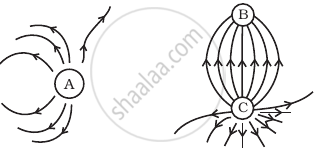
- Which charges are positive?
- Which charge has the largest magnitude? Why?
- In which region or regions of the picture could the electric field be zero? Justify your answer.
(i) near A, (ii) near B, (iii) near C, (iv) nowhere.
Solution
- Charges A and C are positive since lines of force emanate from them
- Charge C has the largest magnitude since the maximum number of field lines is associated with it.
- (i) near A. There is no neutral point between a positive and a negative charge. A neutral point may exist between two like charges. From the figure we see that a neutral point exists between charges A and C. Also between two like charges, the neutral point is closer to the charge with a smaller magnitude. Thus, electric field is zero near charge A.
APPEARS IN
RELATED QUESTIONS
Why do the electrostatic field lines not form closed loops?
A point charge (+Q) is kept in the vicinity of an uncharged conducting plate. Sketch the electric field lines between the charge and the plate?
The figure shows the field lines on a positive charge. Is the work done by the field in moving a small positive charge from Q to P positive or negative? Give reason.
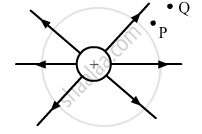
The intensity of the electric field at a perpendicular distance of 0·5 m from an infinitely long line charge having linear charge density (λ) is 3-6 × 103 Vm-1. Find the value of λ.
Draw the pattern of electric field lines, when a point charge –Q is kept near an uncharged conducting plate.
Answer the following question.
Draw the pattern of electric field lines when a point charge +q is kept near an uncharged conducting plate.
Figure shows electric field lines in which an electric dipole P is placed as shown. Which of the following statements is correct?
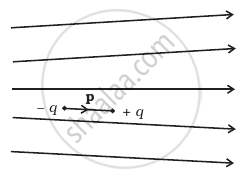
Which of the following figures represent the electric field lines due to a single negative charge?
In figure, two positive charges q2 and q3 fixed along the y axis, exert a net electric force in the + x direction on a charge q1 fixed along the x-axis. If a positive charge Q is added at (x, 0), the force on q1
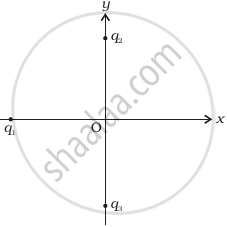 (a) |
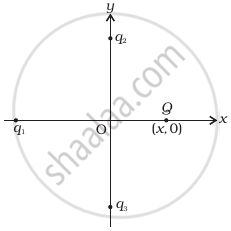 (b) |
The magnitude of the electric field due to a point charge object at a distance of 4.0 m is 9 N/C. From the same charged object the electric field of magnitude, 16 N/C will be at a distance of ______.
